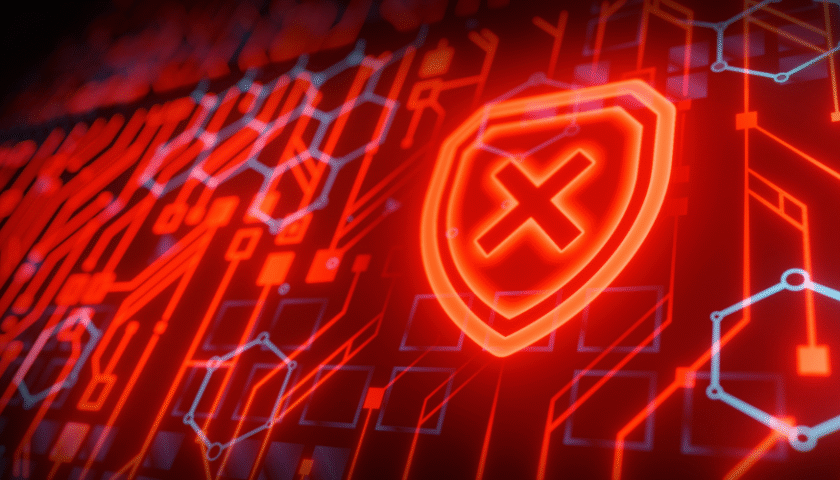Under Siege: A Comprehensive Guide to Battling Hackers and Safeguarding Your Digital Domain
By: Javid Amin
Have you ever experienced that unsettling feeling that something’s amiss with your computer? Perhaps it’s sluggish, lagging behind your usual clicks and commands. Maybe unfamiliar icons adorn your desktop, like unwelcome guests at a party. This unsettling scenario could signal a digital intrusion – a hacker’s unwelcome presence in your virtual space.
While panic might be the initial reaction, take a deep breath. Disconnecting your computer from the internet is the first crucial step. This severs the hacker’s potential lifeline, hindering further damage. If you have a reliable antivirus program pre-installed, unleash its scanning prowess immediately.
However, before succumbing to worries about stolen data and cybercriminals, let’s embark on a journey of digital defense. This guide will equip you with the knowledge and tools to combat those pesky hackers, from the familiar realm of antivirus scans to the intricacies of browser settings and remote access.
The Trusty Antivirus: Your Digital Defender
Think of your antivirus software as a loyal guard dog in the digital realm. When troubleshooting or running scans, always interact with the actual software program itself. Don’t be lured by suspicious pop-up notifications, as these could be malicious attempts to compromise your system further.
Here’s how to maximize your antivirus’s effectiveness:
- Prevention is Key: Regularly update your antivirus software. Hackers are constantly concocting new digital threats, and timely updates bolster your defenses against these evolving perils. A well-maintained antivirus program is more likely to detect and neutralize threats before they wreak havoc.
- Know Your Defender: Familiarize yourself with your antivirus software’s notifications and alerts. This knowledge empowers you to distinguish legitimate alerts from deceptive pop-ups designed to trick you.
- Contact Information at Hand: Write down the contact information for your antivirus software provider and keep it readily accessible near your computer. If a situation arises where you suspect a compromise despite a clean antivirus scan, use this contact information to directly reach customer service. Resist the urge to follow links promising remote assistance; these could be traps set by hackers. Trust the numbers you’ve verified, ensuring a legitimate interaction with your antivirus provider.
The Last Resort: Reformatting and Backups
In some unfortunate instances, a virus or other malicious entity might have infiltrated your system so deeply that a complete reformat, essentially resetting your computer to factory settings, becomes necessary. This erases all data and programs, essentially giving your computer a clean slate.
However, before resorting to this drastic measure, ensure you have recent backups of your crucial data. Regularly backing up essential files, documents, and photos allows you to restore them after a reformat, minimizing data loss. Our companion article, “How to securely get rid of your old PC or Mac,” delves deeper into the process of resetting or reformatting your computer.
Browser Hijacking: Reclaiming Your Digital Gateway
Imagine trying to navigate a familiar website, only to be bombarded with pop-ups, redirected to unknown corners of the internet, or greeted by a strange, unfamiliar search engine. These experiences could indicate a hijacked browser – a situation where malicious software or extensions have taken control of your browsing experience.
Here’s how to reclaim your browser:
- Extension Extermination: Access your browser settings or preferences and meticulously scan for unrecognized extensions. Ruthlessly remove any extensions you don’t remember installing or haven’t actively used.
- Persistent Pests: If, after deletion and restarting your browser, the unwanted extensions keep reappearing, a more significant problem might be brewing. In such cases, consider uninstalling and reinstalling your entire browser. However, if the issue persists even after a clean reinstallation, a deeper malware infection might be present. In such scenarios, a thorough antivirus scan or professional assistance is highly recommended.
Remote Access: A Double-Edged Sword
While a completely powered-down computer presents a tougher target for hackers, enabling remote access functionalities transforms your device into a potential entry point. With remote access turned on, all a hacker needs is an internet connection to access and potentially control your computer, even if it’s physically turned off.
Here are some safety tips regarding remote access:
- Grant Access Wisely: Only authorize remote access for trusted individuals or technicians when absolutely necessary. Avoid granting permanent remote access permissions.
- Strong Passwords: Utilize robust passwords for any remote access tools you employ. Complex passwords containing a combination of uppercase and lowercase letters, symbols, and numbers significantly bolster security.
- Two-Factor Authentication: If available, enable two-factor authentication for remote access applications. This adds an extra layer of security, requiring a secondary verification code in addition to your password before granting access.
Beyond the Basics: Advanced Security Measures
The digital landscape is constantly evolving, and so are the tactics employed by hackers. Here are some additional security measures you can implement to fortify your digital defenses:
- Software Updates: Don’t underestimate the power of timely software updates. These updates often include security patches that address vulnerabilities exploited by hackers. Update your operating system, applications, and web browsers regularly to maintain a robust defense.
- A Firewall: Your Digital Gatekeeper A firewall acts as a gatekeeper, regulating incoming and outgoing traffic on your computer. It filters suspicious connections and safeguards your system from unauthorized access. Ensure your firewall is enabled and configured correctly.
- Strong Passwords & Password Managers: Weak passwords are like flimsy locks – easily picked by determined hackers. Implement strong, unique passwords for all your online accounts. Consider using a password manager to generate and store complex passwords securely.
- Beware of Phishing: Phishing emails and websites are cleverly disguised attempts to trick you into revealing sensitive information like passwords or credit card details. Be cautious of unsolicited emails, even if they appear to be from legitimate sources like banks or social media platforms. Don’t click on suspicious links or attachments, and double-check website addresses before entering any information.
- Multi-Factor Authentication (MFA): MFA adds an extra layer of security by requiring a second verification step, like a code sent to your phone, in addition to your password when logging into accounts. Enable MFA wherever possible for enhanced protection.
- Public Wi-Fi with Caution: Public Wi-Fi networks are convenient, but they can be breeding grounds for hackers. Avoid conducting sensitive transactions or accessing confidential information on unsecured public Wi-Fi. If you must use public Wi-Fi, consider employing a virtual private network (VPN) to encrypt your internet traffic.
- Data Backups: The Ultimate Safety Net As mentioned earlier, regularly backing up your data is a crucial safety measure. Data backups act as a safety net in case of a cyberattack, accidental deletion, or hardware failure. Utilize cloud storage solutions or external hard drives to create regular backups of your essential files.
- Security Software Suite: Consider investing in a comprehensive security software suite that goes beyond basic antivirus protection. These suites often offer features like firewalls, anti-phishing, and advanced malware detection, providing a more layered defense against online threats.
Building a Culture of Cybersecurity Awareness
Cybersecurity is not a one-time fix; it’s an ongoing process that requires vigilance and awareness. Here are some tips to cultivate a culture of cybersecurity within your household or workplace:
- Open Communication: Encourage open communication about online safety. Discuss potential threats and security best practices with family members or colleagues.
- Education is Key: Stay informed about the latest cybersecurity threats and educate yourself on safe online practices. Numerous resources are available online and through cybersecurity organizations, offering valuable insights and educational materials.
- Regular Reviews: Schedule regular reviews of your security software, passwords, and overall online practices. This proactive approach ensures your defenses remain robust in the face of evolving threats.
Unearthing Digital Intruders: Checking Your System for Hacks
While the previous sections equipped you with preventative measures, sometimes the need arises to actively investigate potential hacks. Here’s a roadmap to help you identify traces of unwanted visitors in your digital domain:
1. The All-Seeing Scan: Antivirus and Anti-Malware Scans
- Your First Line of Defense: Launch a thorough scan using your trusted antivirus and anti-malware software. These programs are adept at detecting and neutralizing common malware, Trojans, and other malicious software that might have infiltrated your system.
- Regular Scrutiny: Schedule regular scans, ideally weekly or bi-weekly, to maintain a proactive approach to cybersecurity.
- Beyond the Basics: Some antivirus software offers additional features like rootkit detection, which can unearth deeply embedded malware. Explore the capabilities of your antivirus program and utilize them effectively.
2. Task Manager: Unveiling Hidden Processes
- Peeking Under the Hood: Open your Task Manager (Windows) or Activity Monitor (Mac). These tools display currently running processes on your system.
- Scrutinize the Unknown: Look for unfamiliar processes with high resource usage (CPU, memory). Unknown processes might indicate malicious software running in the background.
- Investigate Before Elimination: Don’t blindly terminate processes. Research unknown processes online to verify their legitimacy before taking action. Stopping critical system processes can lead to instability.
3. Unwanted Guests: Checking for Unauthorized Login Attempts
- Windows Event Viewer: The Windows Event Viewer logs system events, including login attempts. Access the Event Viewer and navigate to “Security Logs.”
- Scrutinize Login Attempts: Look for failed login attempts, especially those originating from unfamiliar locations. This could indicate someone trying to crack your password.
- Mac Console App: On macOS, the Console app displays system logs. Filter logs by “security” and look for entries related to failed login attempts.
4. Browser Extensions: Friends or Foes?
- Review Extensions: Review your browser extensions. Remove any extensions you don’t recognize or haven’t used recently. Malicious extensions can collect your browsing data or inject ads into websites.
5. Unusual Activity: Monitoring Network Traffic
- Firewalls and Network Monitoring Tools: Some firewalls and network monitoring tools offer features that allow you to monitor network traffic. This can help identify unusual activity, like excessive data transfer, which could be a sign of malware exfiltrating data.
6. System Restore: A Point of Recourse (Windows Only)
- Windows System Restore: If you suspect a recent hack, and you’ve enabled System Restore on your Windows machine, you might be able to restore your system to a point before the suspected intrusion. However, this approach comes with the caveat of losing any data or programs installed after the restore point.
Remember: If you suspect a serious hack or are overwhelmed by the technical aspects of checking for traces, consider seeking professional help from a computer security specialist. They possess the expertise and tools to conduct a more in-depth investigation and ensure your system’s security.
By incorporating these steps into your cybersecurity routine, you can actively scan for and identify potential hacks, empowering you to take necessary actions to safeguard your system and data.
Bottom-Line: Empowering Yourself in the Digital Age
By implementing the strategies outlined in this guide, you can significantly enhance your cybersecurity posture. Remember, knowledge is power. The more you understand the tactics employed by hackers, the better equipped you are to defend yourself and safeguard your digital domain. Take control of your online security and navigate the digital world with confidence!
Additional Resources: This guide has provided a comprehensive overview of essential cybersecurity practices. To delve deeper into specific topics, consider exploring the following resources:
- National Institute of Standards and Technology (NIST) Cybersecurity Framework: https://www.nist.gov/cyberframework
- Cybersecurity & Infrastructure Security Agency (CISA): https://www.cisa.gov/
- Open Web Application Security Project (OWASP): https://owasp.org/
By staying informed and implementing these measures, you can become a more informed and secure digital citizen.




